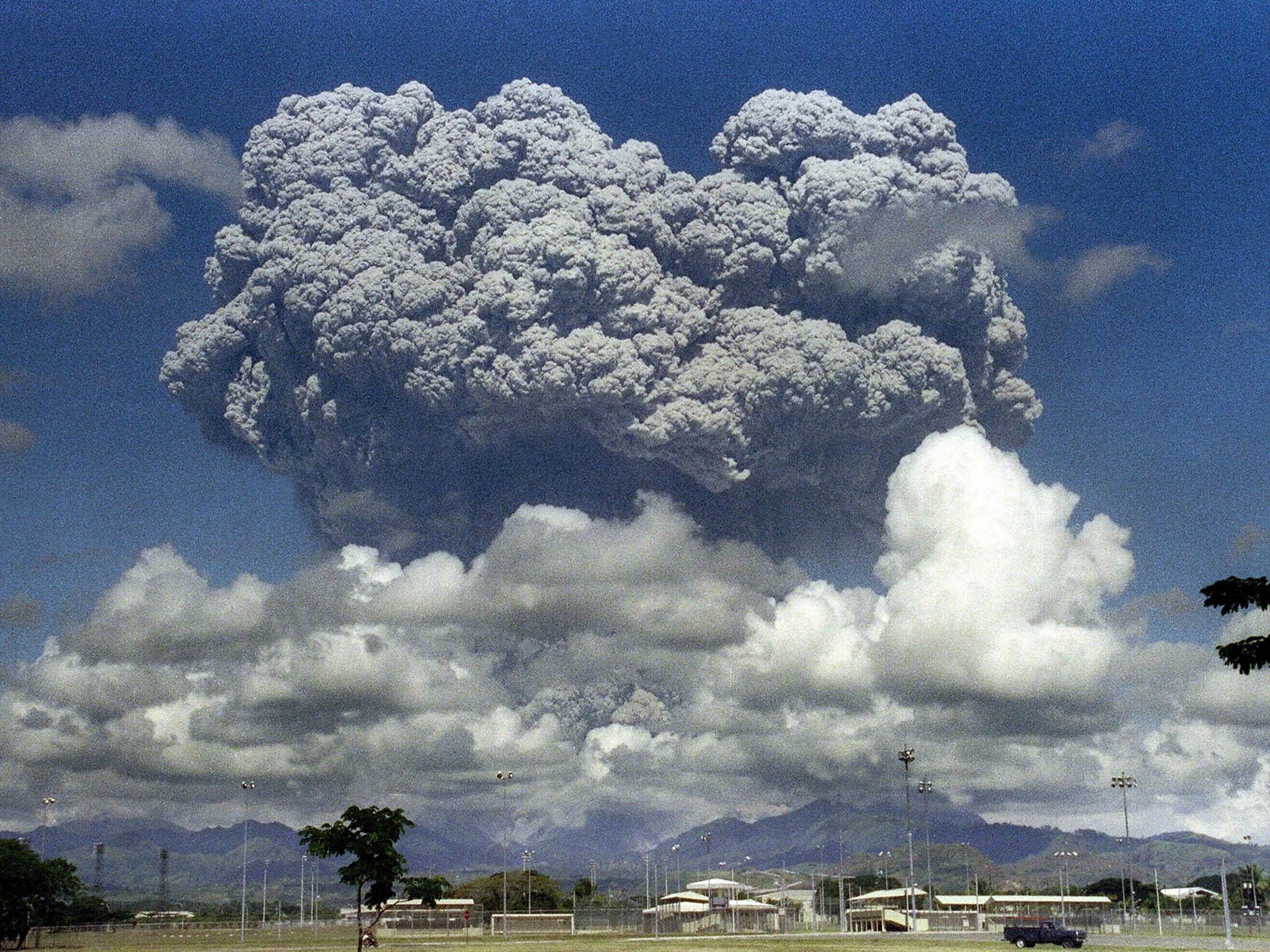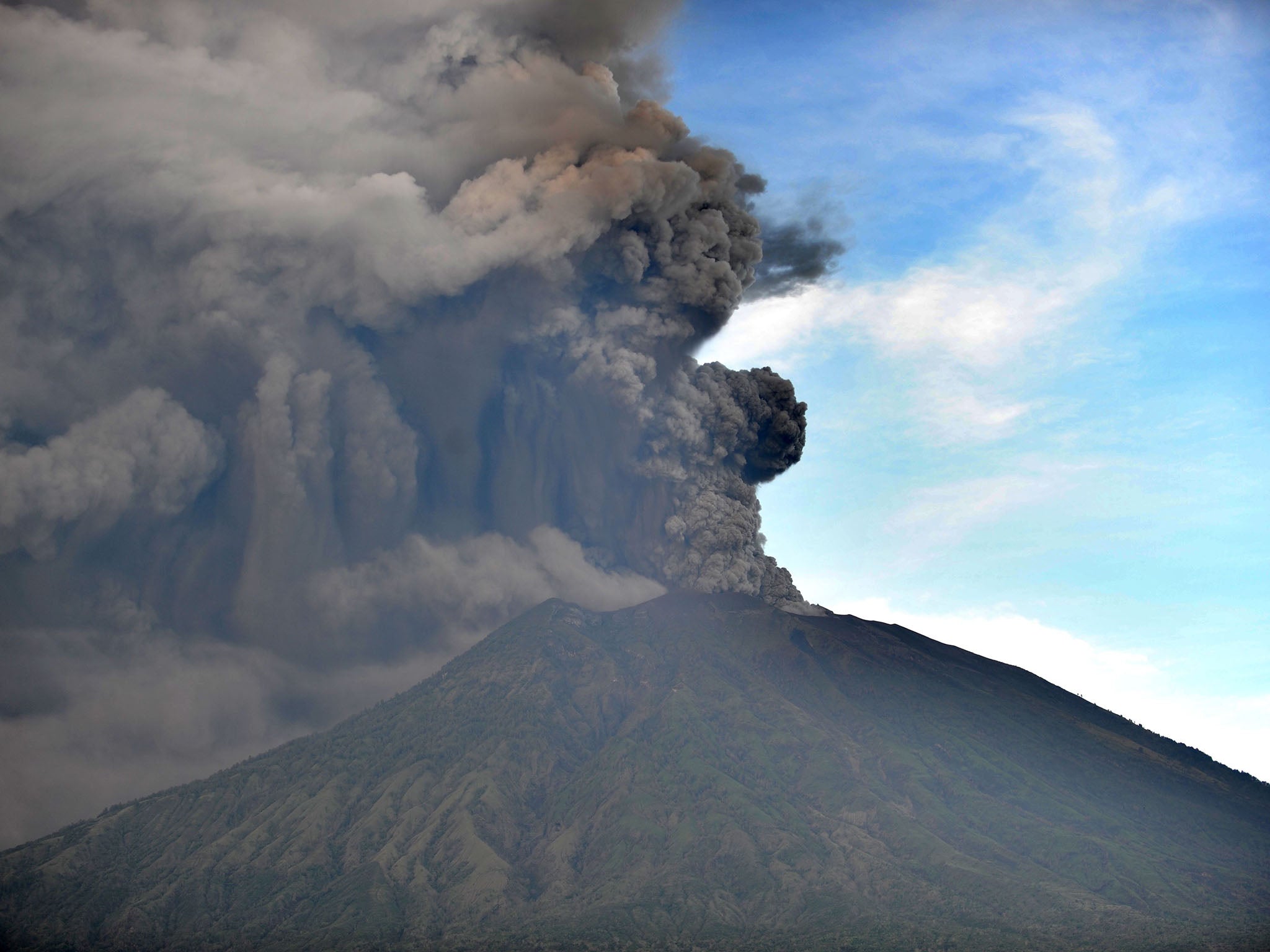Nasa plans to use the next big volcanic eruption to cool the Earth
Studying a powerful explosion could reveal the secrets of geoengineering, an idea that has existed on the fringes of science for decades. But interfering in the atmosphere is still considered taboo

Your support helps us to tell the story
From reproductive rights to climate change to Big Tech, The Independent is on the ground when the story is developing. Whether it's investigating the financials of Elon Musk's pro-Trump PAC or producing our latest documentary, 'The A Word', which shines a light on the American women fighting for reproductive rights, we know how important it is to parse out the facts from the messaging.
At such a critical moment in US history, we need reporters on the ground. Your donation allows us to keep sending journalists to speak to both sides of the story.
The Independent is trusted by Americans across the entire political spectrum. And unlike many other quality news outlets, we choose not to lock Americans out of our reporting and analysis with paywalls. We believe quality journalism should be available to everyone, paid for by those who can afford it.
Your support makes all the difference.A quarter-century ago, Pinatubo, a volcano in the Philippines, blew its top in a big way: it spewed a cubic mile of rock and ash and 20 million tons of sulphur dioxide gas into the atmosphere. The gas spread around the world and combined with water vapour to make aerosols, tiny droplets that reflected some sunlight away from the Earth. As a result, average global temperatures dropped by about 1 degree Fahrenheit for several years.
Powerful volcanic eruptions like Pinatubo’s in 1991 are one of the biggest natural influences on climate. So Nasa researchers and other scientists are planning a rapid-response programme to study the next big one.
But the climate impact of a Pinatubo-size eruption is also a natural analogue of an idea that has existed on the fringes of science for years: geoengineering, or intervening in the atmosphere to deliberately cool the planet.
One geoengineering approach would use high-flying jets to spray similar chemicals into the stratosphere. So by studying the next big volcanic eruption, scientists would also gain insights into how such a scheme, known as solar radiation management, or SRM, might work.
“This is important if we’re ever going to do geoengineering,” says Alan Robock, a Rutgers University researcher who models the effects of eruptions and who has been involved in discussions about the rapid-response project. “But even if there were no such thing as geoengineering, it’s still important to understand how volcanoes affect climate.”
The rapid-response effort would involve high-altitude balloon flights and other methods to gather data about an eruption as soon as possible after it begins and for several years afterwards.
The idea has gained some urgency in recent weeks, since Mount Agung, a volcano in Bali, began erupting at the end of November. Agung’s last major eruption occurred in 1963, and should it fully blow with similar fury it could pump enough sulphur dioxide gas high enough into the atmosphere to have a measurable cooling effect. A huge eruption could also temporarily damage the ozone layer, which scientists would also study.
The relative power of an eruption is ranked on an “explosivity index”, a scale from zero to eight depending largely on the volume of ejected ash and gas and how high it goes – 100,000ft or more in some cases. Agung’s 1963 eruption was rated five on the scale, as was Pinatubo’s in 1991. But the index does not necessarily correlate to impact on climate: the eruption of Mount St Helens in Washington in 1980 was of a similar explosiveness but had little cooling effect because most of the ash and gas was expelled laterally rather than upwards.
Nasa researchers are mapping out a plan to monitor a Pinatubo-like event – “the scale of eruption that would lead to both ozone depletion and a lot of surface cooling”, says Paul A Newman, a senior scientist at the agency who is helping to develop the plan.
Of particular interest would be to measure the amount of sulphur dioxide in the first few weeks, before the gas combines with water vapour to make the reflective aerosols.
It would also be important to monitor the aerosols over time, to see how big they get and how they eventually break down. Bigger aerosols would fall out of the atmosphere sooner, lessening the cooling impact.
Some environmental satellites can monitor volcanic eruptions, but balloon flights would be an important component of any rapid-response programme. Balloons are relatively low cost and can be launched from various locations. It would be important to fly them near the same latitude as the erupting volcano, because the gas plume tends to spread east-west first.
Over the longer term, a robust monitoring programme would need aircraft from Nasa and other agencies, says Jack Kaye, associate director for research at Nasa’s earth science division. That would most likely involve diverting aircraft time from other research projects, he says. “It may mean some people’s plans will have to change,” he adds.
Most planes do not fly high enough to reach the part of the atmosphere where the aerosols form, although they can be outfitted with sensors to take measurements from below. “It would be a huge redirection of resources,” Newman says. “You’re only going to do this if you have something really big to look at.”
Nasa officials play down the benefits to the study of geoengineering of a volcano research programme. Geoengineering has long had an outlaw image among much of the scientific community, viewed as risky last-resort measures to solve climate problems that would be better dealt with by cutting greenhouse gas emissions. Even discussing geoengineering concepts has long been considered taboo among many scientists.

“From my viewpoint, the big issues are really about the impacts of volcanoes, not on SRM per se,” Newman says.
But in the past few years, some scientists and policymakers have begun to argue for limited direct research into geoengineering concepts to better understand their potential as well as risks, and be better prepared should global warming reach a point where some kind of emergency action were deemed necessary.
A few scientists have proposed small-scale outdoor experiments to study aspects of solar radiation management, and last month the American Geophysical Union, one of the nation’s largest scientific societies, endorsed the idea of some research into what it called “climate intervention”.
Scientists cannot predict precisely when a volcano will blow. Even though Mount Agung is being closely monitored since coming back to life, scientists cannot say for certain when or if it will fully erupt.
And even if Agung were to erupt soon, there is no guarantee it would be explosive enough to send significant amounts of gas and ash high enough into the atmosphere to be worth monitoring. Some volcanologists suggest, in fact, that because Agung had a powerful eruption only half a century ago, any eruption now might not be big enough.
Similarly, the current eruption of Mayon in the Philippines is not expected to have any climate impact.
But Robock said that eventually some large volcano would blow on the order of the 1991 Pinatubo eruption. “It’ll probably be one you’ve never heard of,” he says.
© New York Times
Join our commenting forum
Join thought-provoking conversations, follow other Independent readers and see their replies
Comments